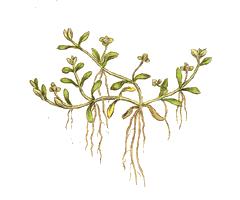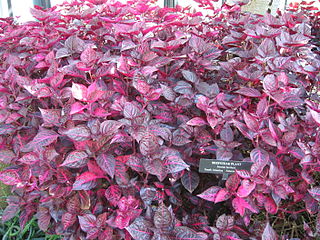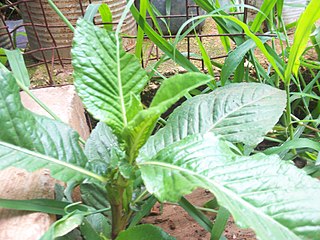
Orchids are plants that belong to the family Orchidaceae, a diverse and widespread group of flowering plants with blooms that are often colourful and fragrant.

The common sunflower is a large annual forb of the genus Helianthus. It is commonly grown as a crop for its edible oily seeds. Apart from cooking oil production, it is also used as livestock forage, as bird food, in some industrial applications, and as an ornamental in domestic gardens. Wild H. annuus is a widely branched annual plant with many flower heads. The domestic sunflower, however, often possesses only a single large inflorescence atop an unbranched stem.

Hover flies, also called flower flies or syrphid flies, make up the insect family Syrphidae. As their common name suggests, they are often seen hovering or nectaring at flowers; the adults of many species feed mainly on nectar and pollen, while the larvae (maggots) eat a wide range of foods. In some species, the larvae are saprotrophs, eating decaying plant and animal matter in the soil or in ponds and streams. In other species, the larvae are insectivores and prey on aphids, thrips, and other plant-sucking insects.

A sepal is a part of the flower of angiosperms. Usually green, sepals typically function as protection for the flower in bud, and often as support for the petals when in bloom.

Amaranthaceae is a family of flowering plants commonly known as the amaranth family, in reference to its type genus Amaranthus. It includes the former goosefoot family Chenopodiaceae and contains about 165 genera and 2,040 species, making it the most species-rich lineage within its parent order, Caryophyllales.

Rosa rugosa is a species of rose native to eastern Asia, in northeastern China, Japan, Korea and southeastern Siberia, where it grows on beach coasts, often on sand dunes. It should not be confused with Rosa multiflora, which is also known as "Japanese rose". The Latin word "rugosa" means "wrinkled", referring to the wrinkled leaves. Often used as an ornamental plant, it has become invasive in parts of Europe, North America and South America.

Celosia is a small genus of edible and ornamental plants in the amaranth family, Amaranthaceae. Its species are commonly known as woolflowers, or, if the flower heads are crested by fasciation, cockscombs. The plants are well known in East Africa's highlands and are used under their Swahili name, mfungu.

Gynoecium is most commonly used as a collective term for the parts of a flower that produce ovules and ultimately develop into the fruit and seeds. The gynoecium is the innermost whorl of a flower; it consists of pistils and is typically surrounded by the pollen-producing reproductive organs, the stamens, collectively called the androecium. The gynoecium is often referred to as the "female" portion of the flower, although rather than directly producing female gametes, the gynoecium produces megaspores, each of which develops into a female gametophyte which then produces egg cells.

Elatinaceae is a family of flowering plants with ca 35 species in two genera: Elatine and Bergia. The Elatine are mostly aquatic herbs, and the Bergia are subshrubs to shrubs. Elatine species are widely distributed throughout the world from temperate to tropical zones, with its greatest diversity found in temperate zones. Bergia is found in temperate to tropical Eurasia and Africa, with two tropical and one tropical to temperate species in the Americas. The center for biodiversity of Bergia is the Old World tropics, and this is also the center for biodiversity for the family. Neither genus is found in arctic ecosystems.

Iresine is a genus of flowering plants in the family Amaranthaceae. It contains 20 to 25 species, all of which are native to the American tropics. The generic name is derived from the Greek word εριος (erios), meaning "wooly", referring to the trichome-covered flowers. Bloodleaf is a common name for those species that have colored foliage, and these are often cultivated as ornamental plants. Some species are additives to versions of the hallucinogenic drink ayahuasca.

Hebanthe erianthos, known as suma or Brazilian ginseng, is a species of plant in the family Amaranthaceae. The specific epithet is also spelt "eriantha", although the basionym is Iresine erianthos.
Iresine chrysotricha, synonym Irenella chrysotricha, is a species of plant in the family Amaranthaceae. It is endemic to Ecuador. Its natural habitats are subtropical or tropical dry forests and subtropical or tropical moist lowland forests. It is threatened by habitat loss.

Jean Jules Linden was a Belgian botanist, explorer, horticulturist and businessman. He specialised in orchids, which he wrote a number of books about.

Heliconia psittacorum is a perennial herb native to the Caribbean and South America. It is considered native to French Guiana, Guyana, Suriname, Venezuela, Colombia, Bolivia, Brazil, Paraguay, Panama and Trinidad and Tobago. It is reportedly naturalized in Gambia, Thailand, Puerto Rico, Hispaniola, Jamaica and the Lesser Antilles. It is often cultivated as a tropical ornamental plant in regions outside its native range.

Iresine herbstii, or Herbst's bloodleaf, is a species of flowering plant in the family Amaranthaceae. Some call this plant the chicken gizzard plant.

Iresine diffusa, or Juba's bush, is a species of plant in the family Amaranthaceae. Its form Iresine diffusa f. lindenii, formerly Iresine lindenii, is commercially available as an ornamental.
Iresine heterophylla, or Standley's bloodleaf, is a plant species native to the southwestern United States and also to Mexico. It has been collected from Arizona, New Mexico, Texas, Chihuahua, Sonora, Durango, Coahuila, Nuevo León, Campeche and Tabasco.
I. flavescens may refer to:

Iresine angustifolia is a plant in the genus Iresine of the family Amaranthaceae.
Grevillea rhizomatosa, commonly known as Gibraltar grevillea, is a species of flowering plant in the family Proteaceae and is endemic to a restricted area of north-eastern New South Wales. It is a spreading, bushy shrub with egg-shaped to almost round leaves and small clusters of green and pinkish-red flowers.















